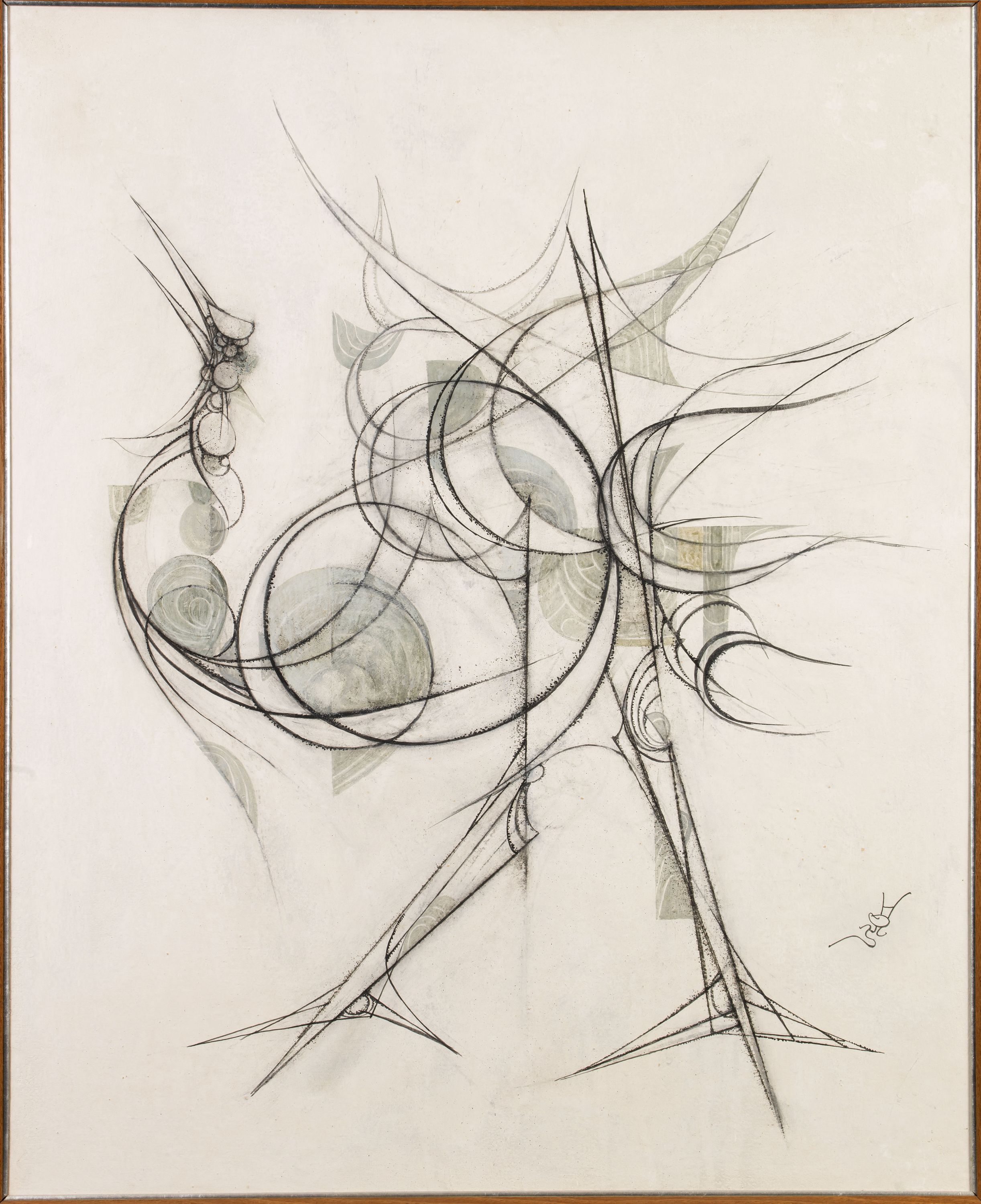
Coq
Toile (matériau), Encre, Couleurs - Pigments
Peinture
H. 103.8 x l. 83 cm
M.C. 2014-24
Don manuel, Shimomura, Shizue
Gifted to the museum by his wife, Mrs Shizue Shimomura, eight works by Shimomura Ryōnosuke (1923-1998) shed light on the evolution of this traditional painting movement in the second half of the 20th century. After studying at what is today the Kyoto City University of Arts, Shimomura Ryōnosuke, a native of Ōsaka, cofounded in 1948 the Pan Real Art Association, an avant-garde movement that aimed to regenerate Nihonga, which was showing signs of waning. In the work of Shimomura, this transformation took place through the continuation of traditional themes in new styles and techniques. From the 1950s, his work shows a taste for graphic stylisation and an underlying geometrical construction influenced by Cubism. Towards the end of this decade, he also developed a technique based on paper pulp, enabling him to work on both the drawing and the relief. He printed part or all of the motifs in the paste, using at the same time gofun and the traditional techniques of xylography and ink. The principal theme of his works became a bird with wide-spread wings. Several works from the 1970s and early 1980s are nevertheless characterised by material effects and the depiction of fighting cocks, a theme already explored by one of the great masters of the first generation of Nihonga artists, Takeuchi Seihō (1864-1942). Shimomura’s work differed, however, in the stylisation of his motifs. These also featured female figures, continuing the tradition of the bijin-ga, pictures of beautiful women, which appeared in the 17th century, but in a caricatured style invented by Uda Tekison (1896-1980) in the 1920s.